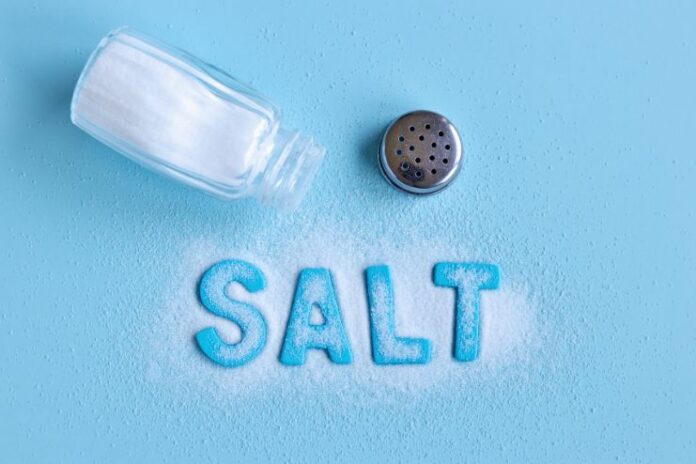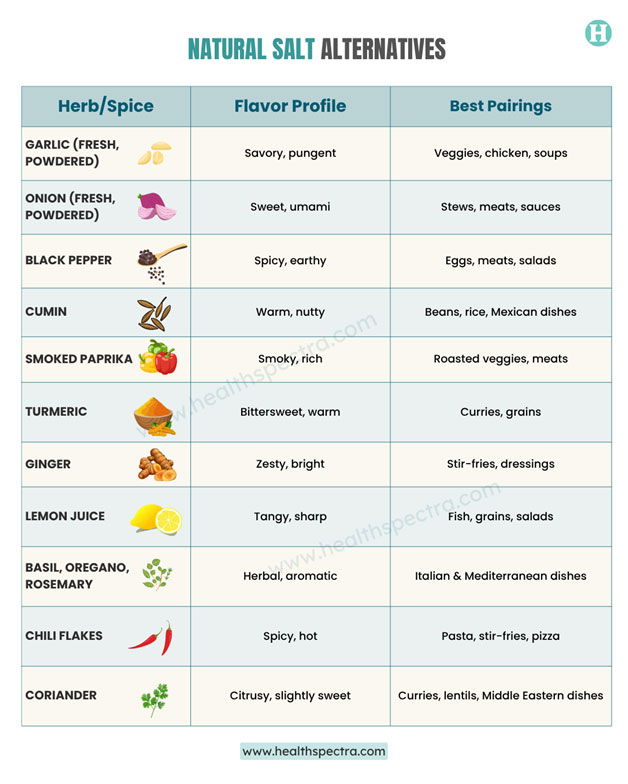Let’s be honest – salt is magic. Just a pinch can transform a flat, lifeless dish into something you can’t stop eating. From crispy fries to warm bowls of soup, salt’s ability to elevate flavors is one reason it appears in almost everything we eat.
But here’s the flip side: we’re eating too much of it. Way too much. And it’s catching up to us in ways that are hard to ignore.
In recent years, doctors, nutritionists, and health organizations worldwide have raised serious concerns about excessive sodium intake.
High blood pressure, heart disease, kidney problems — the list of risks is long and sobering. Yet, cutting back isn’t easy, especially when salty foods are often the tastiest (and most convenient).
So the real question is: Can you reduce salt and still love your food? The answer is a resounding yes — and it’s simpler than you think. With the right herbs, spices, smart swaps, and cooking techniques, you can keep your meals full of bold, satisfying flavor while giving your heart and kidneys a much-needed break.
This guide breaks down practical, creative ways to reduce sodium, without feeling like you’re stuck eating bland salads for the rest of your life.
Why Reducing Sodium Matters

First things first: How much salt is too much? According to the U.S. Food and Drug Administration (FDA), adults should aim for less than 2,300 mg of sodium per day — roughly one teaspoon of table salt. The World Health Organization (WHO) goes further, recommending an ideal limit of 2,000 mg/day.
But here’s the kicker: Most people are clocking in closer to 3,400 mg daily, often without realizing it. The bulk doesn’t come from your salt shaker — it’s hidden in processed foods, restaurant meals, and packaged snacks.
Dr. Lawrence J. Appel, MD, MPH, Professor of Medicine at Johns Hopkins University, says, “Excess salt intake has a major role in the pathogenesis of elevated BP. Supportive evidence comes from animal studies, observational studies, trials, and meta-analyses.
To date, >50 clinical trials have evaluated the effects of sodium reduction on BP in adults. A recent systematic review and meta-analysis of trials testing the effects of sodium intake on BP concluded that lowering sodium intake reduces BP in adults and children and that most people will likely benefit from reducing sodium intake.”
What Too Much Sodium Does to Your Body
Let’s break it down clearly:
- High Blood Pressure (Hypertension): Excess sodium makes your body hold onto water, which boosts blood volume and forces your heart to work harder. Over time, this increases blood pressure.
- Heart Disease & Stroke: Elevated blood pressure damages artery walls, narrows blood vessels, and sets the stage for cardiovascular events.
- Kidney Strain: Your kidneys filter excess sodium out of your blood. Too much salt forces them to work overtime, increasing the risk of chronic kidney disease.
- Bloating & Water Retention: Sodium pulls water into your bloodstream, leading to puffiness, bloating, and that heavy, swollen feeling.
- Bone Health Concerns: Emerging research suggests high sodium intake can increase calcium loss through urine, which may weaken bones over time and elevate osteoporosis risk, especially in women.
Bottom line? Reducing sodium is one of the most powerful things you can do for long-term health — and it’s worth getting intentional about it.
Read More: 7 Effective Ways to Flush Excess Salt from Your Body for Better Health
Understanding Where Sodium Hides
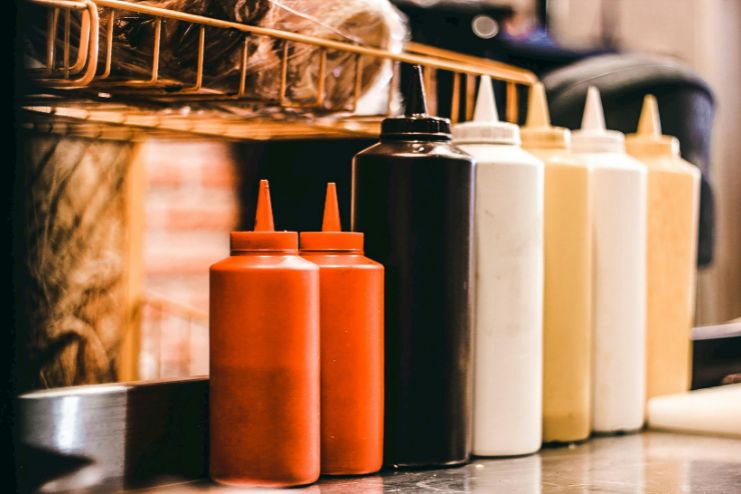
You might think, “I barely use salt at home — I’m good.” Not so fast. The majority of sodium in our diets comes from processed and packaged foods, not the pinch you add to eggs in the morning.
Dr. Cheryl Anderson, PhD, Chair of the Department of Public Health Sciences, University of California, emphasizes that “Many people don’t realize that a large portion of their sodium intake comes from processed and packaged foods, not just the salt shaker. Reading labels carefully is essential to reduce hidden sodium.”
Common sodium bombs in everyday foods
- Bread & Rolls: A surprising source — one slice can contain 100–200 mg of sodium.
- Deli Meats & Cold Cuts: Packaged meats can have 500+ mg of sodium per serving.
- Canned Soups & Broths: Some contain up to 800–1,200 mg per cup!
- Condiments: Ketchup, soy sauce, salad dressings, and BBQ sauces are sneaky sodium carriers.
- Snack Foods & Frozen Meals: Chips, crackers, pizzas, and ready meals are salt-heavy for flavor and preservation.
How to read sodium labels (and not get fooled)
Sodium per serving: Check how many servings are in the package — it adds up fast.
- Low sodium = 140 mg or less per serving.
- Reduced sodium = 25% less than regular (but can still be high).
- No added salt = no salt added, but may still have natural sodium.
Natural Salt Alternatives (Flavor Without the Sodium)
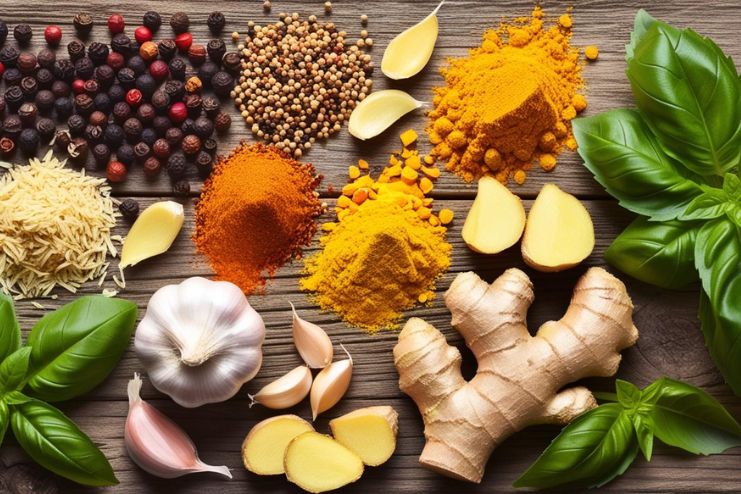
If you want to know how to reduce sodium without losing flavor, here’s where the fun starts. Think of herbs, spices, and aromatics as your new best friends.
Bonus sodium-free seasonings
- Vinegars — Balsamic, apple cider, red wine.
- Fresh Herbs — Parsley, cilantro, dill, mint.
- Mustard (Low sodium) — Sharp, tangy kick.
- Nutritional Yeast — Adds cheesy, umami-rich flavor.
These aren’t just “healthy swaps” — they make your food genuinely more interesting and complex.
Read More: 8 Ways To Reduce Salt Intake Quickly For Better Well-Being
Low-Sodium Salt Substitutes (Caution & Considerations)

Potassium chloride is a common salt substitute found in products like “No Salt” and “Lite Salt.” It mimics saltiness with less sodium.
Dr. Keith Roach states that “Lower-sodium salt substitutes are generally made from potassium salts… For most people, potassium-based salts are safe. However, there are a few people who need to be cautious.”
A word of caution:
- Potassium salt substitutes are not safe for everyone.
- People with kidney disease or on certain medications (like ACE inhibitors, potassium-sparing diuretics) should avoid them.
- Always consult your doctor before switching.
If you’re cleared to use them, start slow — potassium chloride can have a slightly metallic aftertaste.
Salt-Free Inspiration From Around the World
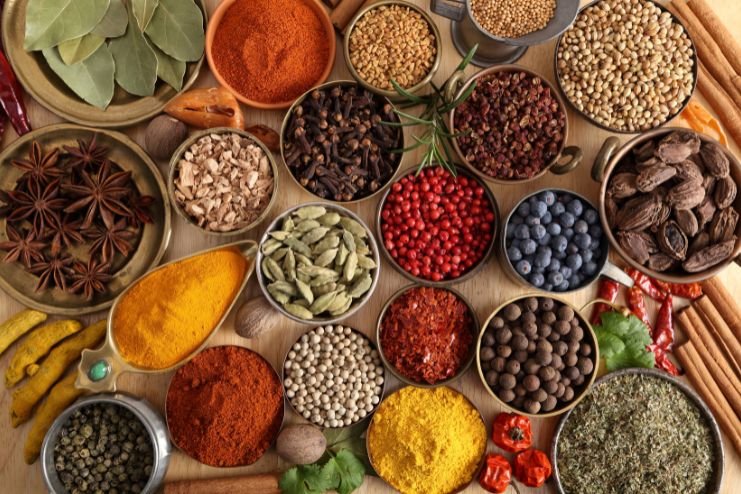
Travel the world — from your kitchen — with these vibrant, sodium-free seasonings:
- Indian: Garam masala, cumin, turmeric, coriander, fresh ginger, and garlic.
- Mediterranean: Olive oil, lemon juice, oregano, rosemary, thyme, sumac.
- Asian: Sesame oil, rice vinegar, ginger, scallions, chili, miso paste (watch sodium).
- Latin American: Lime juice, cilantro, cumin, smoked paprika, chipotle powder.
These global blends add bold, exciting flavors — no salt shaker required.
Cooking Techniques That Enhance Flavor Naturally

Sometimes, it’s not just what you season with — it’s how you cook. These techniques naturally amplify flavors so you don’t miss the salt:
- Roasting & Caramelization: Brings out natural sweetness and depth (think roasted veggies).
- Grilling & Smoking: Adds smoky, charred flavors (great for meats and veg).
- Sautéing in Healthy Fats: Olive oil, avocado oil, and sesame oil carry flavors beautifully.
- Slow Cooking & Braising: Breaks down ingredients and blends spices deeply.
- Layering Flavors: Use aromatics (garlic, onion, ginger) at each stage of cooking to build richness.
Smart Salt Reduction Tips
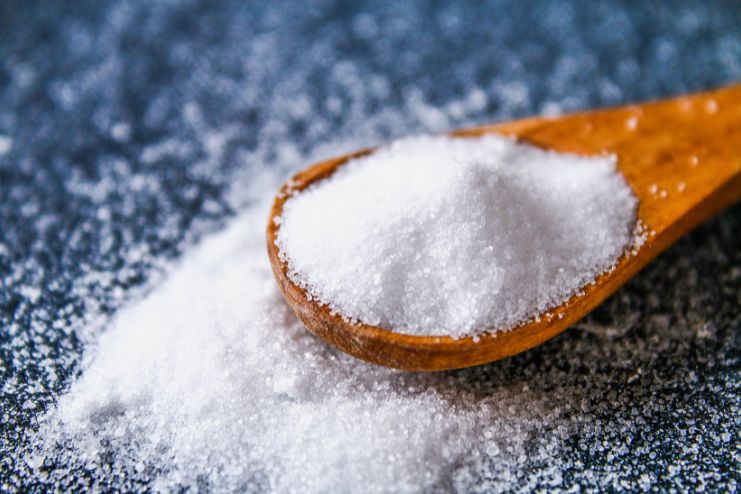
If going cold turkey sounds daunting, small changes can add up. Here’s how to ease into lower-sodium living:
- Reduce gradually: Your taste buds adapt — after 2–4 weeks, lower-salt foods taste normal.
- Season at the end: A sprinkle of salt just before serving packs more punch than salting early.
- Focus seasoning where it counts: Prioritize proteins, vegetables, and sauces. Skip salting pasta water or grains.
- Use salt-free spice blends: Brands like Mrs. Dash or your own homemade rubs make it easy.
- Experiment boldly: Variety keeps your palate excited and less focused on what’s “missing.”
Frequently Asked Questions
- Will food always taste bland when cutting back on salt?
Not at all. Your taste buds adapt surprisingly quickly, typically within 2 to 4 weeks. As you reduce sodium, your palate becomes more sensitive to natural flavors like herbs, spices, and umami-rich ingredients. Soon, foods you once found “bland” can taste more vibrant than ever, and overly salty foods might even start to taste overpowering.
- How can I make snacks flavorful without relying on salty seasonings?
Go for snacks that naturally pack a punch: roasted nuts tossed in cinnamon or smoked paprika, fresh veggies with hummus or herbed yogurt dip, popcorn seasoned with garlic powder and nutritional yeast, or fruit with a squeeze of lime and chili powder. Texture and spice can satisfy your cravings without sodium overload.
- Is pink Himalayan salt or sea salt healthier than table salt?
Not significantly. While pink salt and sea salt contain trace minerals like potassium, magnesium, and calcium, the amounts are too tiny to offer real health benefits. Sodium content is nearly identical across all salt types, so from a health standpoint, they should all be used sparingly.
Final Thoughts
You don’t need to settle for boring food to protect your heart, kidneys, and health. By embracing herbs, spices, and clever cooking, you can slash sodium while keeping every bite vibrant and satisfying. Your taste buds — and your body — will both come out ahead.
Every small shift adds up. Gradually retraining your palate, experimenting with global flavors, and using natural cooking techniques gives you back control. The more you try, the more confident and creative you’ll get — and soon, you won’t even miss the salt.
Flavor and health don’t have to be on opposite sides. With intention, variety, and curiosity, you can build a lifestyle that celebrates both. Your meals will feel fresher, more complex, and surprisingly more exciting — all while giving your heart and kidneys the break they deserve.
References
- https://www.who.int/news-room/fact-sheets/detail/sodium-reduction
- https://www.healthline.com/nutrition/6-dangers-of-sodium-restriction
- https://www.ncbi.nlm.nih.gov/books/NBK50951/
- https://www.healthline.com/nutrition/low-sodium-diet
- https://www.ahajournals.org/doi/10.1161/STROKEAHA.113.002870
- https://www.dignityhealth.org/content/dam/dignity-health/bay-area/dominican/dominican-stroke-center/volpp-et-al-2023-food-is-medicine-a-presidential-advisory-from-the-american-heart-association.pdf
- https://www.timescolonist.com/life/your-good-health-salt-substitute-ok-for-most-unless-you-have-kidney-disease-7929076
- https://www.heart.org/en/health-topics/high-blood-pressure/changes-you-can-make-to-manage-high-blood-pressure/shaking-the-salt-habit-to-lower-high-blood-pressure
- https://health.clevelandclinic.org/know-salt-hiding-food
- https://www.heart.org/en/healthy-living/healthy-eating/eat-smart/sodium/sodium-sources
- https://nutrikonnect.in/sources-of-hidden-salt-a-must-know-for-ones-on-a-renal-diet/
- https://www.healthline.com/nutrition/foods-high-in-sodium
- https://www.uhhospitals.org/blog/articles/2023/06/salt-substitutes-a-healthy-alternative-to-the-real-thing
- https://www.healthline.com/nutrition/salt-alternatives
- https://www.health.com/condition/hypertension/which-type-of-salt-is-healthiest-for-you
- https://pmc.ncbi.nlm.nih.gov/articles/PMC9363242/
- https://www.who.int/publications/i/item/9789240105591
- https://www.heart.org/en/healthy-living/healthy-eating/eat-smart/sodium/how-to-reduce-sodium
In this Article















